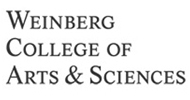Team:Northwestern/Project/Modelling
From 2011.igem.org
PROJECT

RESULTS

CONSIDERATIONS

ABOUT US

NOTEBOOK

ATTRIBUTIONS


In our mathematical model we developed a system to characterize each of the two (las and rhl) plasmids. Simple detection is fairly straightforward. The engineered E. coli cells will express R-proteins (LasR and RhlR) constitutively. In the presence of PAI-1 and PAI-2, the R-proteins and the autoinducers will dimerize, which results in the induction of the promoter. Upon induction, the induced promoters will express the reporter genes. The purpose of modelling our system is to understand on a fundamental level which factors, biochemical species, rate constants, and parameters govern the performance of our system. By understanding the mechanics of the system through developing a mathematical model, we can better understand and characterize our findings, and potentially develop improved biosensor devices.
Our modelling approach describes the time evolution of the concentrations of relevant molecules as a system of first-order, nonlinear, ordinary differential equations. The associated variables and constants relevant to the generic model are detailed in the table below. Additionally, the brackets [ ] indicate concentrations.

We have developed two distinct biosensor systems that function independently of one another. They are the Las and Rhl sensor systems. However, each system can be modelled using a similar approach, implementing a series of differential equations. The general model accounts for the production of the R-protein from the plasmid, diffusion of the autoinducer into the cell, and finally, the transcriptional activation and production of fluorescent reporter protein. A graphical representation of the biochemical system can be found below in Figure 1.
 |
In Figure 1, the R-protein/autoinducer dimer (D) can act as a transcription factor and bind to the induced promoter (IP), which induces the expression of the reporter at the rate r6 and degrades back to D and IP at the rate r13. Transcription and translation are described as a single step that follows a Hill Function, yielding:

The R-protein is produced by the translation of the R-protein mRNA (RmRNA) at a rate r5 and degrades at the rate r10. Moreover, the R-protein can forward dimerize at the rate r1 and reverse at rate r2. RmRNA is transcribed at the rate r3 by the constitutive promoter (CP) and degrades at the rate r4,

Upon the binding of D to IP at the rate r6, GFP mRNA (GmRNA) is transcribed. GmRNA degrades at the rate r9 and is translated to GFP at the rate r7. GFP degrades at the rate r8,

The autoinducer PAI-1 diffuses passively into the cell as a result of the concentration gradient, cell volume, surface area, and membrane thickness, which establish the equation mass transfer. Intracellular (A1i) and extracellular (A1e) PAI-1 degrades at the rate r11 and r12,

The general model will now be applied to the Las and Rhl systems in the figure below. The increasing rate numbers are just indicative of independent reactions and rate constants for each reaction.
 |
We conducted a sensitivity analysis to understand how the output of our model depends on our choice of model parameters. This analysis demonstrated to us which biochemical species and/or parameters are most critical to the model and how it functions, potentially motivating future specific experiments to measure these critical values.
The sensitivity analysis (Figure 3) was conducted with the autoinducer, R-protein, Dimer, GFP mRNA, and GFP designated as outputs. The input parameters' (k1-k15) function can be observed above in Figure 1. The data in Figure 3 suggests that among all the output factors, the R-protein mRNA is the most sensitive to changes in the rate constants. The constants with the greatest influence on the R-protein are k3, k4, k5 (function found in Figure 1). The second most sensitive output factor is the R-protein concentration. This factor is sensitive to a number of parameters (rate constants k1-k5, k10-12: found in Figure 1).
 |
By conducting a sensitivity analysis, we have identified the key parameters and biochemical species that would have the greatest impact on the behavior of our biosensor system. We consequently varied these critical parameters to fit the model to the experimental data, which can be seen on our summary page.
 "
"




